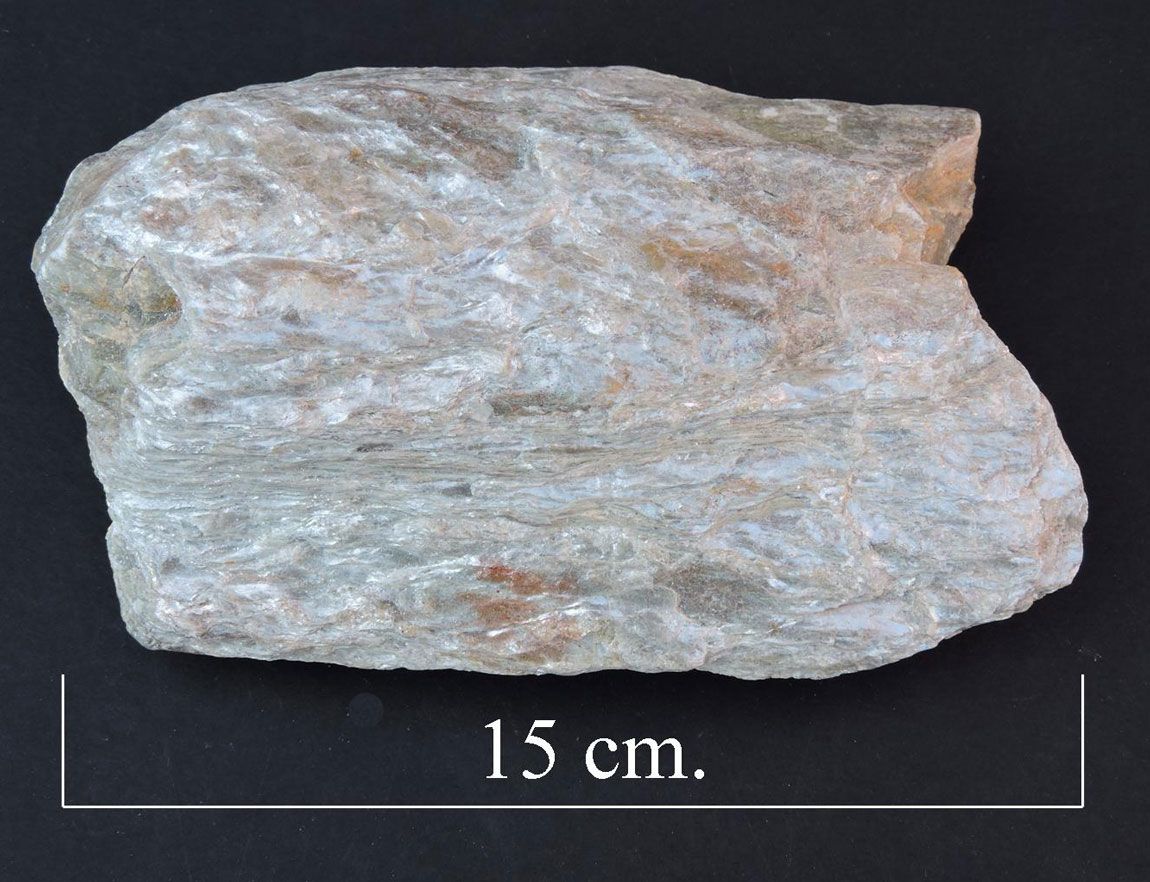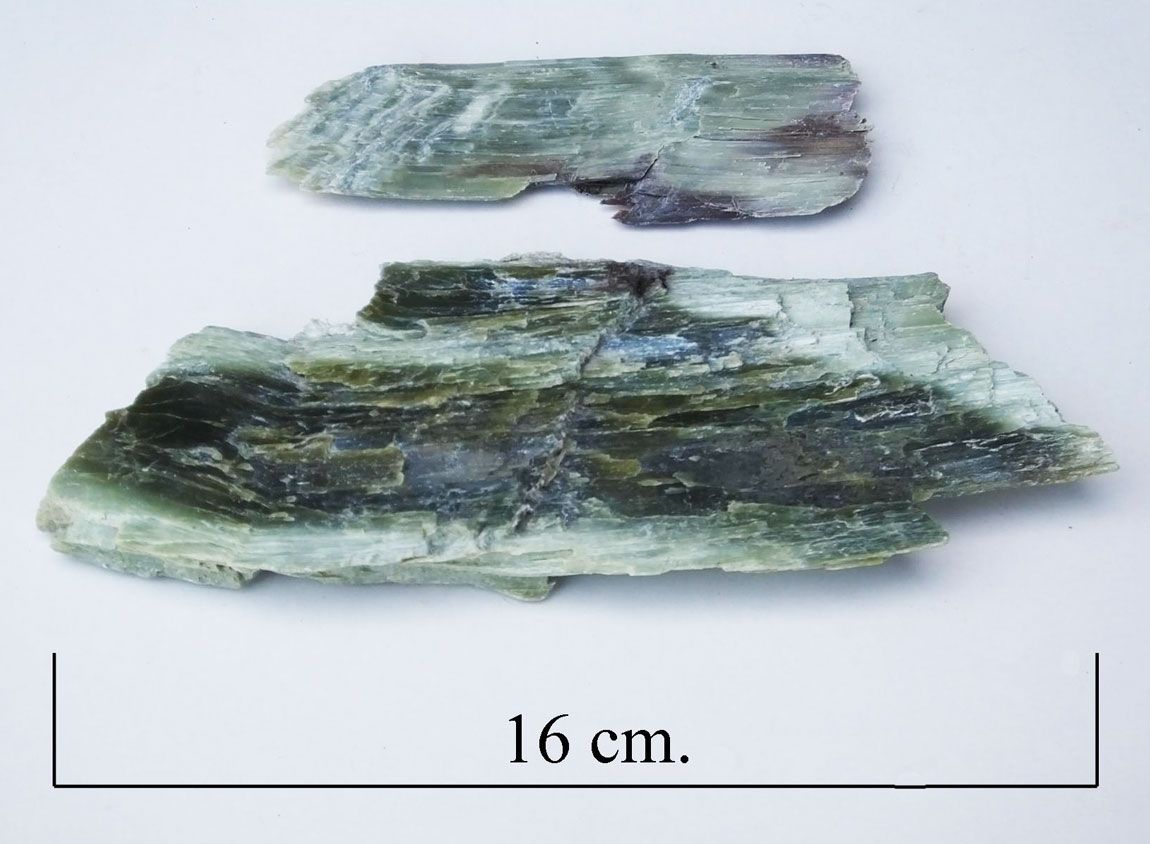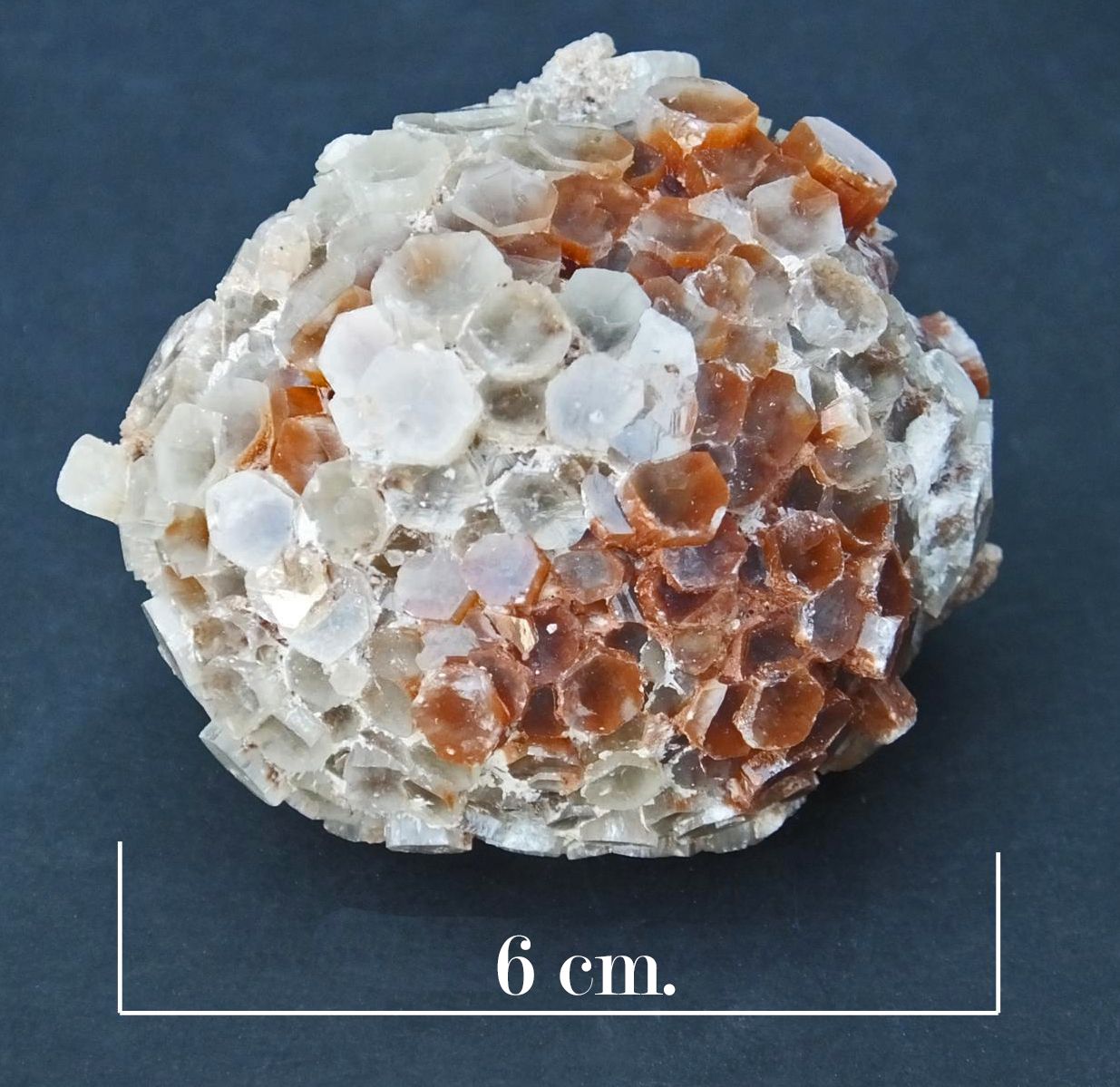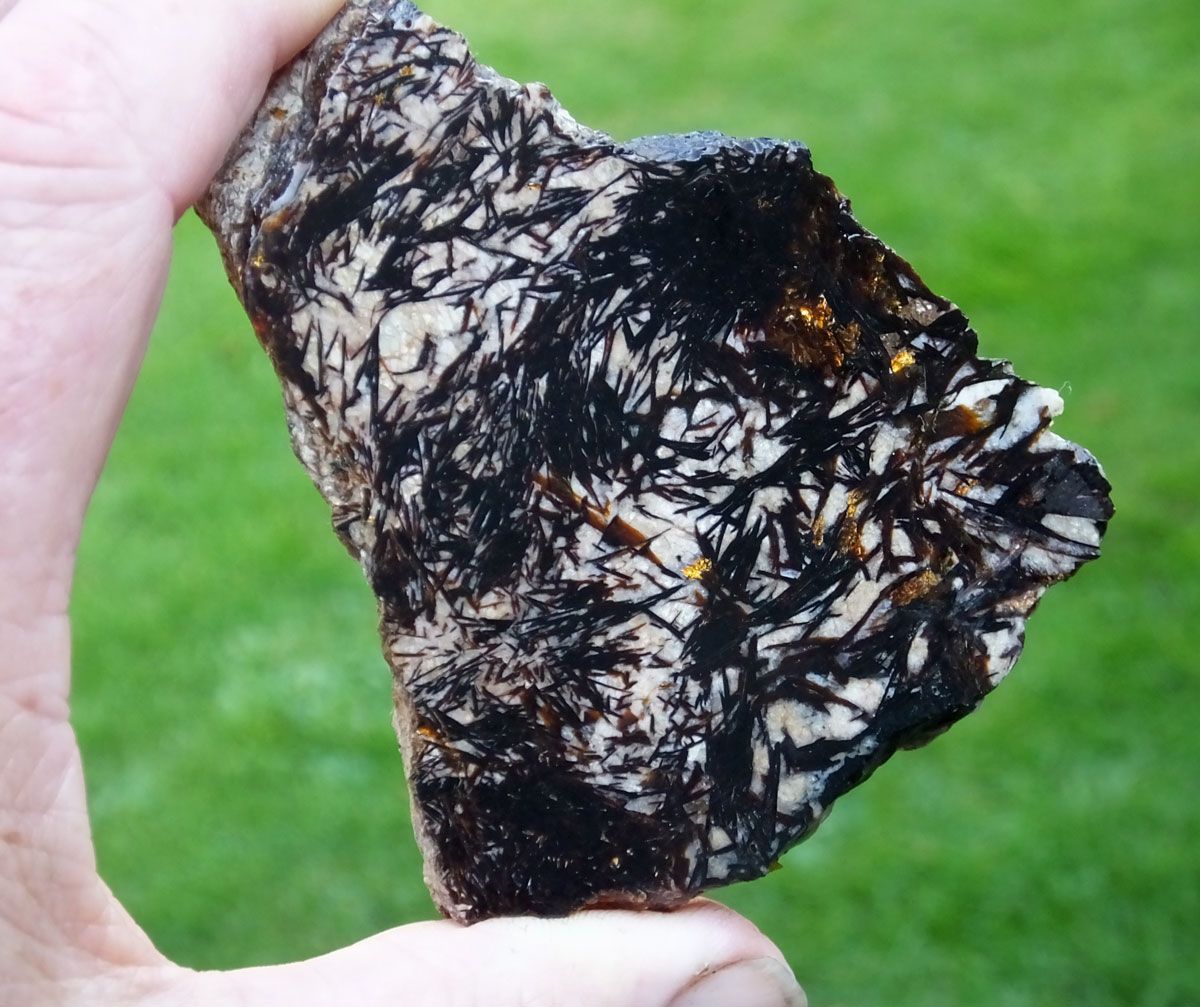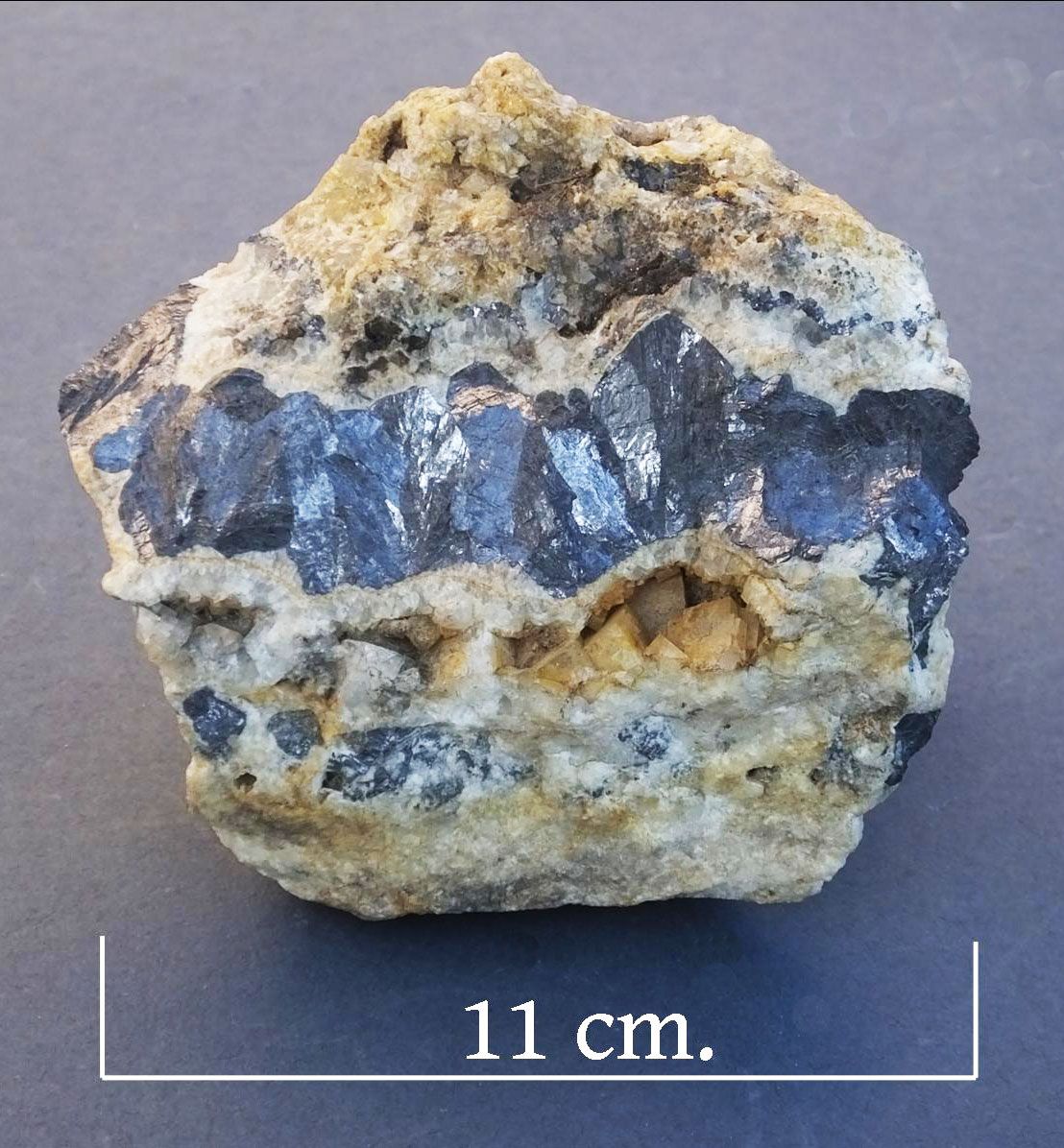
Galena, Eyam.
Galena, lead sulfide, PbS The irregular boundary of the galena is probably because it is composed of rather large integrown cubic crystals. On either side of the galena there is fluorite. For the main the fluorite is in massive form, but with a few small crystals exposed just under the galena. There is a second, smaller layer of galena lower down, with small pieces of galena embedded in the massive fluorite. less obvious from the front view, but very obvious from the side. The specimen is from the Ladywash mine in Eyam, Derbyshire.
